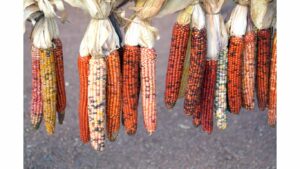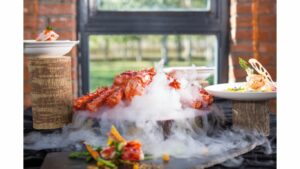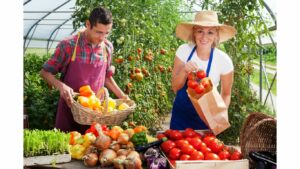I invite you on a sensory expedition, not into the future, but into a vibrant tapestry of culinary heritage that spans centuries. Wyoming, known for its majestic landscapes, didn’t just bear witness to the march of time but also cradled the sacred traditions of its indigenous people, the Native American tribes. This is a narrative of resilience, interwoven with the cultural importance of food, a tale that deserves to be told and savored.
While Native American restaurants may not be as prevalent in Wyoming as in some other regions, there are establishments that honor and incorporate Native American foodways into their menus. Here are a few restaurants in Wyoming where you can experience Native American-inspired cuisine:
- Wind River Casino’s Red Willow Restaurant (Riverton, Wyoming):
- Located on the Wind River Indian Reservation, the Red Willow Restaurant offers a variety of dishes inspired by Native American cuisine. Visitors can enjoy traditional favorites such as Indian tacos, frybread, and bison burgers, along with contemporary interpretations of indigenous ingredients.
- Shoshone Rose Casino & Hotel’s Deka-Guy-Hee Restaurant (Lander, Wyoming):
- Another establishment on the Wind River Indian Reservation, Deka-Guy-Hee Restaurant at Shoshone Rose Casino & Hotel features a menu that celebrates Native American flavors. Guests can savor dishes like buffalo stew, cedar plank salmon, and wild rice pilaf while enjoying views of the surrounding landscape.
- Powwow Cafe (Ethete, Wyoming):
- This small café, located on the Wind River Indian Reservation, serves up a mix of Native American and American comfort food. The menu often includes items like Indian tacos, buffalo burgers, and homemade desserts, providing a taste of indigenous cuisine in a casual setting.
- St. Stephens Indian Mission’s Wampanoag Café (St. Stephens, Wyoming):
- Operated by St. Stephens Indian Mission, the Wampanoag Café offers a selection of Native American-inspired dishes, including traditional soups, stews, and frybread. The café also serves as a community gathering place and often hosts events featuring indigenous cuisine and culture.
- Wyoming Indian High School’s Chief Washakie Dining Hall (Ethete, Wyoming):
- While primarily a dining facility for students and staff, the Chief Washakie Dining Hall at Wyoming Indian High School occasionally opens its doors to the public for special events and fundraisers. Visitors can enjoy homemade meals that showcase traditional Native American ingredients and cooking techniques.
The Earth’s Bounty: Traditional Native American Ingredients and Dishes
The cuisine of Wyoming’s Native American tribes is a reflection of their relationship with the land, an array of dishes that tell the story of survival and reverence. From the succulent bison and game meat to the plentiful gifts of the prairie like the wild chokecherries and precious artemisia, each ingredient holds a sacred place in the indigenous culinary lexicon.
Corn, Beans, and Squash: The Three Sisters in Wyoming
The ‘Three Sisters’ planting technique—where corn, beans, and squash are interplanted—represents not just agricultural efficiency but a profound trove of nutrients for the Shoshone, Arapaho, and Eastern Shoshone tribes. Corn, known as “Mother,” “Nourisher,” or “Sacred Seed,” was central to their diet, while beans represented the family’s well-being, with their vines climbing around the corn, and squash acted as the soil caretaker, with their large leaves shading the earth to keep in moisture.
Bison: The Sacred Provider of Sustenance
For many of the Plains tribes, the bison was an integral part of life, used for food, shelter, clothing, and tools. The preparation of buffalo was a ceremonial and communal act, with chunks of meat often roasted on open fires or dried in the sun to make pemmican. Its heart, lungs, and liver were regarded as delicacies and consumed with great respect for the animal’s spirit.
The Art of Gathering: Wild Foods and their Significance
The traditions of foraging are deeply rooted in indigenous cultures, and wild fare was a significant part of the diet. Berries, roots, and wild game made for flavorful and nutrient-rich meals that offered a deeper connection to the land. Wild chokecherries, for example, were harvested and processed into a dark, sweet juice or preserved as jams and jellies, each batch embodying the legacy of the harvest.
European Encroachment and the Transformation of Wyoming’s Foodways
With the arrival of European settlers, the landscape and foodways of Wyoming changed irreversibly. The lush tracts of land where the Three Sisters once thrived gave way to crops of different origins. Trade routes introduced new spices, utensils, and cooking techniques that eventually, albeit inadvertently, altered the traditional dishes of the Native American tribes.
The Trail of Tears and the Legacy of Frybread
During the forced displacement of Native American tribes, known as the Trail of Tears, rations provided by the government were scarce, often consisting of flour, salt, and lard. From these meager provisions, a resilient spirit concocted frybread, a food that has become a symbol of Native American unity and sometimes, a poignant reminder of historic hardships.
The Bitter Sweetness of Change
The impact of European contact on the cuisine of Wyoming’s tribes isn’t just about the introduction of new ingredients and techniques but the assimilation that followed. Foods like stews incorporating European vegetables and meats, and baking became part of the traditional foods among many tribes in Wyoming.
Preserving the Flavor of Heritage: Initiatives to Honor Indigenous Cuisine
In a modern age where fast food and convenience often prevail, there is a move to honor and preserve the traditional foodways of Wyoming’s Native American tribes. Individuals, organizations, and chefs have embarked on journeys of rediscovery, seeking to maintain the link to culinary history and ensure the survival of these time-honored traditions.
Reviving Ancient Techniques
In an effort to reclaim lost culinary knowledge, there are movements to teach and practice traditional harvesting and food preparation techniques. Many indigenous chefs are becoming advocates for the return to ancestral methods, using stone-ground flour instead of modern processed varieties and rediscovering the lost art of cooking in earth ovens.
Celebrating Indigenous Cuisines
Festivals and events dedicated to Native American food and culture serve as platforms for celebration and education. They not only offer a taste of traditional dishes but also provide an opportunity for the wider community to appreciate the significance of these foodways and their continuing role in the state’s cultural fabric.
The Fusion Feast: Native American Influences in Modern Wyoming Cuisine
The echoes of the past are being heard in the bustling kitchens of Wyoming’s modern culinary scene. Chefs and food enthusiasts are discovering new ways to incorporate traditional Native American ingredients and flavors into contemporary dishes, creating a fusion that pays homage to the past while looking towards the future.
Redefining Local
The concept of ‘local’ is taking on new meaning, with chefs sourcing indigenous ingredients straight from the reservations or from local farmers who grow heirloom varieties reminiscent of those cultivated by the tribes. Bison steaks, sunflower seeds, and wild fruits find their way onto upscale plates and home kitchens alike, infusing each bite with a sense of place and history.
Native American Cuisine in High Demand
There’s a growing appreciation for the depth and uniqueness of Native American cuisine, with its emphasis on hearty, natural foods. These dishes are not just curiosities for most but items of epicurean interest, garnering attention and excitement among food aficionados in Wyoming and beyond.
Passing the Torch: Community Engagement and the Education of Indigenous Foodways
To truly honor and sustain the indigenous culinary traditions of Wyoming, it is essential to engage the wider community, particularly the youth. By sharing knowledge and practices, the heritage of Native American foodways can continue to live and evolve, ensuring that the narrative remains a vibrant part of the state’s cultural legacy.
Cultural Learning through Cooking
Cooking classes and workshops offer a hands-on approach to understanding the complexities of indigenous cuisine. They provide participants a chance to not only savor the flavors but also appreciate the cultural context in which these foods are prepared and consumed, fostering a deeper respect for the process.
Collaborative Educational Efforts
Collaborations between tribal communities, educational institutions, and culinary experts are paving the way for a broader understanding of Native American food traditions. Through joint initiatives, research, and curriculum development, the stage is set for a new generation to carry forward the stories embedded in every native dish.
The Unfinished Feast: Future Steps in Preserving Native American Foodways
The tale of Native American foodways in Wyoming is an ongoing narrative, one that requires dedication and support to grow and flourish. By spreading awareness, encouraging participation, and championing initiatives that value and protect indigenous culinary heritage, we ensure that the timeless flavors of the past continue to feed us, body and soul.
Support for Indigenous Food Sovereignty
Efforts to promote and protect indigenous food sovereignty are essential in maintaining the integrity of native food sources. This involves advocating for and sustaining traditional farming and gathering practices, combating food deserts, and fostering policies that empower tribal communities to control their own food systems.
A Call to Tastebuds and Hearts
The richness and depth of Native American foodways in Wyoming call on all who hear their story to not just be passive listeners, but active participants in a movement to cherish and uphold these culinary treasures. Through support, advocacy, and a willingness to learn and taste, we can all become stewards of this vital component of our shared cultural landscape.
Conclusion
Wyoming’s Native American foodways unveil a world where every dish is a thread that binds past, present, and future. It is a tale of perpetual innovation alongside the steadfast commitment to traditional values. The flavors of the wild Plains and the wisdom passed down through ancestral methods are an imperative mosaic in the grand culinary narrative of the state. It is a feast of history, and it waits for us, just beyond the horizon of time.









